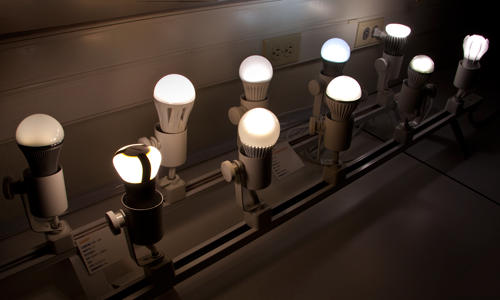High Intensity Discharge (HID) lighting replaces the filament of a light bulb which has a capsule of gasoline. The light emanates from an arc discharge among two closely spaced electrodes. This discharge is hermetically sealed within a little quartz glass tubular capsule. HID lights call for a lamp ballast, which meticulously regulates the voltage provided towards the capsule of fuel. The amount of light produced is better than a standard halogen bulb though consuming less power; this light more closely approximates the shade temperature of natural daylight.
In all High Intensity Discharge lamps, light is produced by passing a latest by means of a metal vapor. Free of charge electrons colliding with an atom within the vapor momentarily knock an electron right into a higher orbit on the atom. When the displaced electron falls back to its former degree, a quantum of radiation is emitted. The wavelength of radiation depends on the energy zone in the disturbed electron and around the style of metal vapor utilized in the arc tube.
HID bulbs create 5 percent of their output when to start with ignited, requiring a handful of seconds (typically 15-20) to reach total output. Also, if power towards the lamp is misplaced or turned off, the arc tube need to neat in advance of the arc might be re-struck and light produced. Halcyon HID lights require approximately 5-10 seconds just before they are often re-lit. Light-Emitting Diodes (LED) are light sources utilizing diodes that emit light when linked within a circuit. The impact is often a form of electroluminescence exactly where LEDs release a substantial amount of photons outward; the LED is housed in the plastic bulb, which concentrates the light supply.
One of the most crucial component of an LED is definitely the semi-conductor chip found from the center of your light source. The chip has two areas separated by a junction. The p area is dominated by constructive electric fees and the n area is dominated by adverse electrical charges. The junction acts as a barrier to the flow of electrons involving the p plus the n areas. When sufficient voltage is utilized on the semi-conductor chip, the electrons are able to cross the junction to the p region.
When adequate voltage is applied for the semi-conductor chip, electrons can move simply throughout the junction where these are straight away drawn to the optimistic forces within the p area. When an electron moves sufficiently shut to a positive charge while in the p area, the 2 costs ?re-combine!
Each time an electron recombines using a favourable charge, electrical likely power is converted into electromagnetic power. For every recombination of the adverse and also a good charge, a quantum of electromagnetic vitality is emitted from the type of a photon of light. This photon features a frequency determined from the traits in the semiconductor material (normally a blend with the chemical factors gallium, arsenic, and phosphorus). LEDs that emit diverse colours are made from distinctive semiconductor resources. Said just, LEDs are tiny bulbs fit into an electrical circuit. However, as opposed to ordinary incandescent bulbs, they don't possess a filament. LEDs are illuminated solely by the motion of electrons in a semiconductor material, producing them energy efficient and very resilient more than lengthy intervals of time.
LED Benefits as below:
LEDs do not have a filament to burn out or break; consequently, they last significantly longer than traditional bulbs. Given that an exceptionally small semiconductor chip runs an LED, they can be very long lasting and have a tendency to final numerous a large number of hrs. In addition, LEDs are quick on significantly like halogen lamps, and hence handy for use in applications that happen to be subject to frequent or probable on-off cycling. Conversely, HID lamps are extra fragile and also have to warm up (15 ¨C 25 seconds) throughout ignition. Nevertheless, HID
lights are significantly brighter than latest LED configurations. It is because the side-emitting light uncovered with HIDs is much easier to focus; the front-emitting nature of LEDs isn't going to lend itself to a tightly centered beam. HID lighting continues to be favored by most divers given the superior intensity and tight emphasis. Nevertheless, LED lighting fixture technology is transforming rapidly and it truly is foreseeable that LEDs will at some point surpass the effectiveness of HID lighting.
